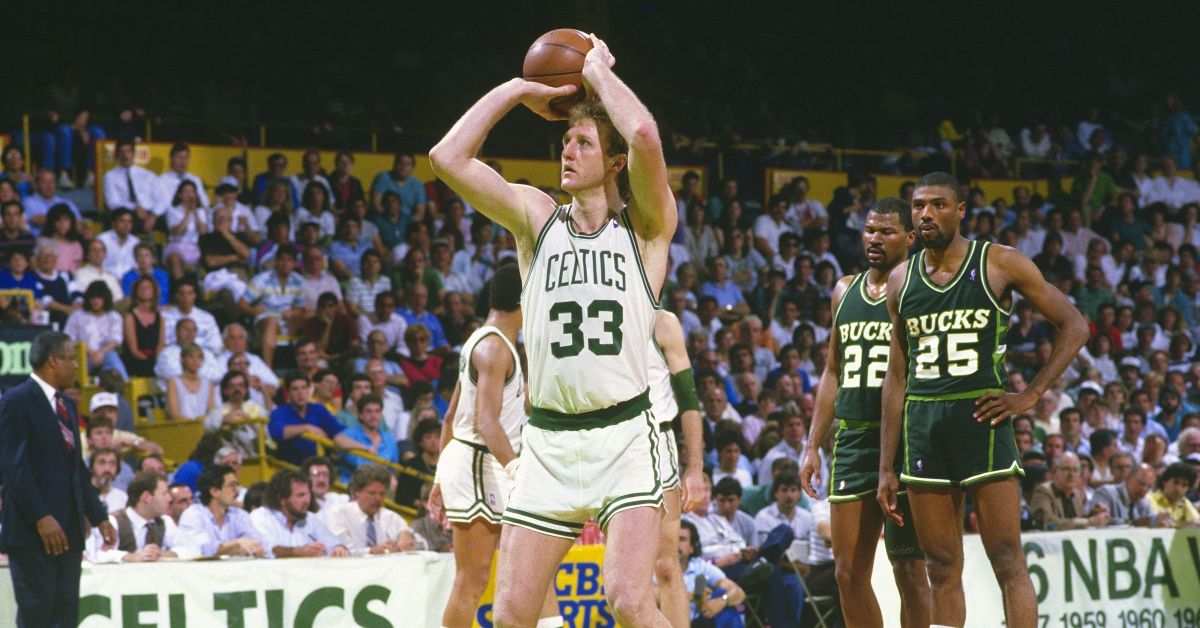On June 29, 2021, Atlanta Hawks player Clint Capela hit a shot from behind the backboard during Game 4 of the quarterfinals of the NBA playoffs against the Milwaukee Bucks. As a clip of this circus shot went viral, many people compared it to a similar shot made by former Boston Celtics player Larry Bird:
Here's a video of Bird's behind the backboard shot:
The big difference between Bird's shot and Capela's, of course, is that Bird's over-the-backboard shot didn't actually count. If you listen to the announcers in the above-displayed clip, you can hear them say that the basket was waved off.
So why didn't Bird's shot count? The complicated answer involves some carefully worded language in the NBA's rules about what constitutes the boundaries of the court. We'll get to that later. The simple answer comes from a 1986 newspaper clipping from the Boston Globe -- Bird's foot was out of bounds:
The Boston Globe wrote:
Larry Bird's spectacular behind-the-backboard shot in the third quarter did not count, but he should have at least received two points for creativity.
With 6:50 remaining in the third, Bird attempted to save a rebound from going out of bounds. After getting the board he was falling out of bounds and lunged forward. Instead of turning to fling the ball inbounds, he did the next best thing - and swished a basket on a shot that went up and over the glass.
The crowd erupted when Bird nailed his fantastic fallaway, heaving the shot over the backboard through the net. But it was all for naught. The referee ruled that Bird had stepped on the base line.
Even if Bird's foot wasn't on the line, we're not sure if his behind-the-basket shout would have counted.
Bird, of course, isn't the only player to hit this sort of shot. As such, this isn't the first time that this topic has come up. Is it legal to shoot a shot up and over the backboard? As far as we can tell, it all depends on the angle.
Rule 8, Section II of the NBA rules state that a ball is considered out-of-bounds when it touches any object, person, or the floor that is outside of the court boundaries. It goes on to state that "any ball that rebounds or passes directly behind the backboard, in any direction" is also considered out-of-bounds. The key phrase here is "directly behind the backboard."
In 2009, Rajon Rondo hit a similar shot that went up and over the backboard. The shot counted, and as NBA fans debated whether or not it should have in the game's aftermath, Joe Borgia, the then-NBA vice president of referee operations, explained why the call was correct:
Think of the [backboard] as a long tunnel that goes straight back ... If the ball goes through that tunnel, it’s a violation. If you looked at Rondo’s shot, it was an arching shot up and over the backboard. It never passes through the tunnel.
[...]
The old rule stated it was illegal when the ball went over the backboard (either direction). So imagine the backboard extending up to the roof – if the ball bounced off the rim and hit any part of the imaginary backboard a violation was assessed. We had too many game stoppages when the ball bounced over the edge so we changed the rule to say the ball cannot go directly behind the backboard. That is why I said the backboard is now an imaginary ‘tunnel’ that goes back, not up to the roof like in the old rule.
Here's a video of Rondo's shot:


